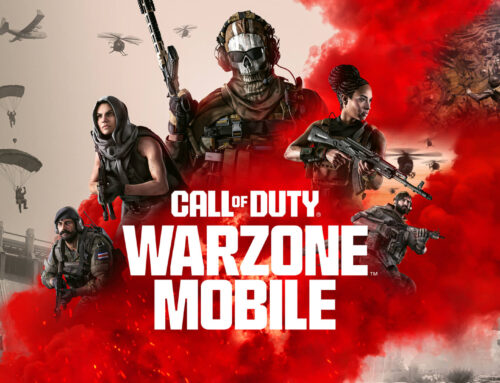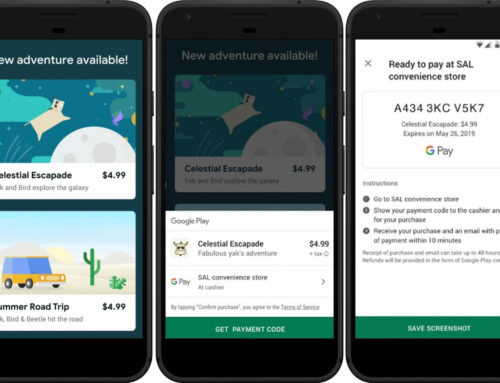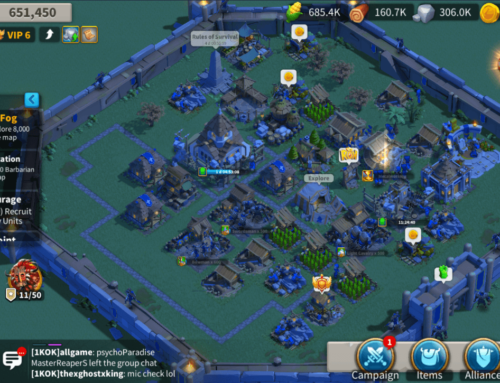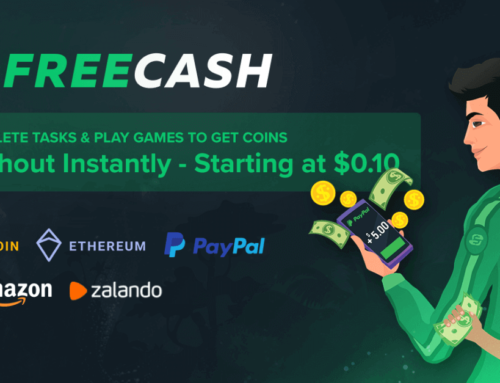I wasn’t very passionate about Lego in my childhood but that changed overtime to the point that now, as a parent, I can stop lying that I’m buying them for my kid and just admit I’m addicted to those blocks. I’m not alone in this, billions (yes billions) others love those multi-colored blocks. Partly due to the fact that it doesn’t require much skill to fit them, partly due to the fact that you can create anything. Our love for Legos is the reason why games such as Minecraft became so huge. Why? Well, Minecraft is basically a virtual Lego system where you can build anything.
The design technique used in games such as Minecraft is based on Voxels. Basically those cubes you see in the design of the games are the 3D equivalent of pixels (roughly said) and are called voxels. While it’s not mandatory to have them of rectangular shape, it would have been preposterous to have a Minecraft based on spheres.
So the cubical version is widely used and popular in the gaming industry. More recent the mobile gaming industry noticed an explosion of games that use voxel based designs, and Crossy Roads is one such example. In it you play a chicken (initially) that must cross the road without getting killed. Those of a certain age will recognize immediately the gameplay of Frogger, a popular Arcade from the 80s, but that’s not important. What makes the game great is its design.

Frogger (left) vs Crossy Roads with Voxel design (right)
Which takes me to the game I recently played and actually enjoyed: Cliffy Jump. Yes, the game uses similar elements that you find in Crossy Roads and Minecraft, but it does come with a different gameplay and overall perspective. The goal in it is to help a character (initially a pig) get safely through a sort of a labyrinth, avoiding spikes, hammers, falling in the water and dozen others obstacles. When each level starts your character just begins walking and you only need to tap when you want it to do an action. Sounds easy in theory but difficult in practice as you can see in the quick demo below:
Gameplay & Design
The complicated part in Cliffy Jump is calculating when to help the character do that particular action. There’s a level where you must pass under deadly hammers and you must do your estimations ahead of time what’s the exact split second when to start running. If you don’t calculate correctly you’re dead and must start over. So the gameplay is basically go safe from point A to point B while avoiding all obstacles in between.
Design-wise the game offers a perspective view (almost a side view) with a 3D feeling and obviously lots of voxels. The design is beautiful, not only because of the voxel use but also because of the contrast between the 16-pixels graphics used for most elements and the deadly water. [highlight]The game spans 15 different world and each of them has 10 different levels thus 150 of playable scenarios. That’s a lot of fun hours considering the difficulty of more advanced worlds.[/highlight] The difficulty also resides in the simple fact that if you die before finishing a world (i.e. at level 9 out of 10) you must start over from the beginning of the world – that if you don’t have any coins available to purchase a revive or if you don’t want to watch a video ad.
Cliffy Jump focuses on the social part as well, allowing you to share with your friends replays of what happened in a level. Furthermore, if you connect via Google Play Services you get to access a leaderboard and see how your score compares with your friends’. I must be either rather lonely or the only one that tried it because I was first in my circles’ list.
Cliffy Jump’s Features
- Lovely Design. The big plus in Cliffy Jump is the way everything fits in together to create a nice playable environment. You have this perspective view over the maze, with pixel-perfect design and various catchy animations. I do believe this is the game’s strongest point. While the mix of elements from Minecraft and Crossy Roads are noticeable, it also includes new ones and those are a good fit together (i.e. flowing water, building the maze on the spot). The palette of colors is well chosen too for each environment, as it is easy to distinguish fast (you’ll need to react fast) what are the obstacles to avoid. All accompanied by sounds and custom soundtrack that at some points are over the top (though you can easily disable the sounds from its options).
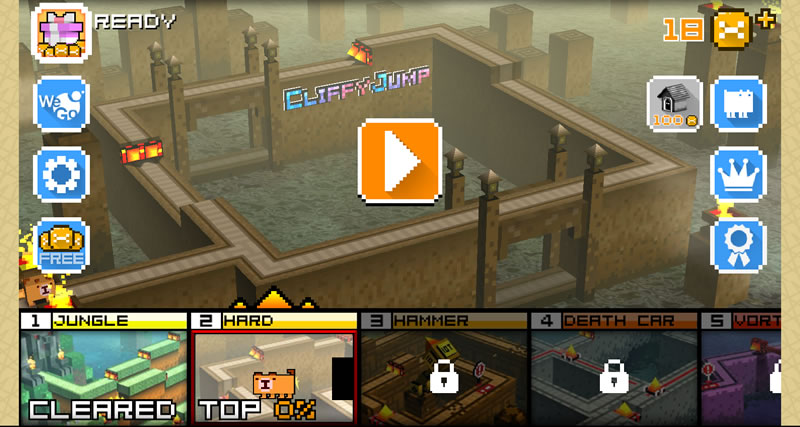
Main screen in the game with stage preview.
- Gradual Gameplay. Things start easy to give you a chance to understand the gameplay. Your piggy runs and you must tap to jump over a pit, spikes, deadly blocks or simply to advance at the right moment before a huge hammer crashes you. But the pace of the game is quite accelerated. Being a continuous movement you have to visually understand ahead of time what you’ll need to do and when, so that you finish the level. As you unlock new worlds you also discover new types of obstacles: rotating spikes, falling walls, double-hammers, fires and many more. Thus you must adapt your strategy from one level to another. There’s one common point though, you will die a lot and that’s where coins come handy.
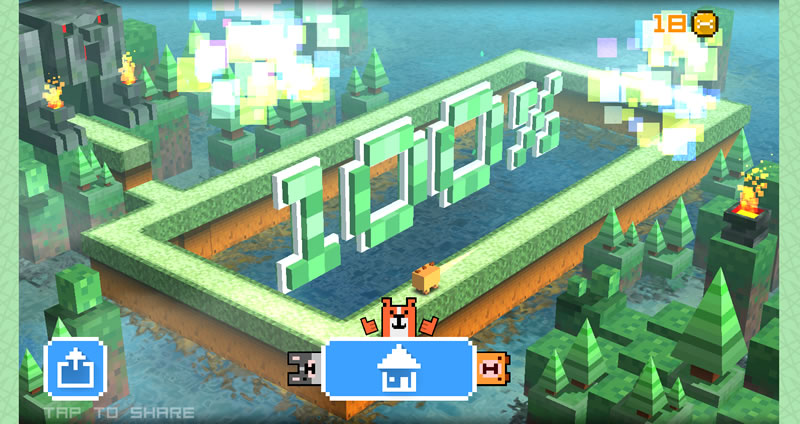
First level is the easiest.
- Dozens of Characters. When the game starts you play with a cute piggy-slash-pink creature. But there are as many as 60 different playable characters. This is where the first in-app purchase is present, if you want to unlock characters you pay $1 and you’re done. Otherwise you can unlock a random character by paying with 100 virtual coins which you gather mainly throughout levels. I honestly don’t see the point of changing your character since all have the same attributes, but this probably falls under the vanity upgrade category and some people do – I’ve seen this in Crossy Roads as well which even created one character to resemble PSY, the guy from Gagnam Style, though to be honest in that case I don’t know why you’d be enticed to save the character.
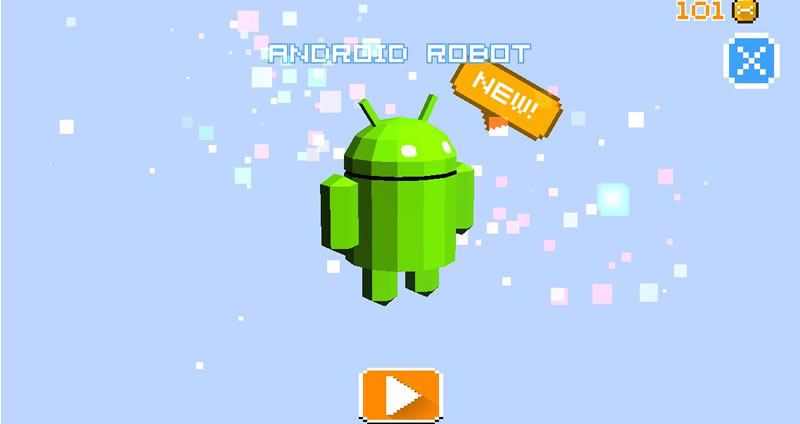
The Android robot, one of the dozen characters available.
- Multiple Worlds. Right now there are 15 different worlds/stages/environments. You start in the Jungle, which is appropriately themed. Continue with a Hard stage, then Hammer, Death Car, Vortex and dozens others finishing with the Dreadfull Roller and Transform. Each of these stages introduce a new element and all of them are comprised of 10 different levels, basically the same design just different setup. There’s no progress save for a world. If you die before finishing the 10 levels a stage has, you can revive and continue for a number of coins, watch a video with ads to revive or simply start it over. That’s difficult but somehow true to old Arcade game scenarios. I also like how you can preview what each stage contains, if you tap on one world (even if it is locked) the main screen just starts playing that world so you’d have a preview. The only thing I don’t like here is some of the names they’ve chosen for the stages, like “up down”, “double hammer” – these sound more as NSFW slang than actual game stage names. But truth be told, those are just stage names…
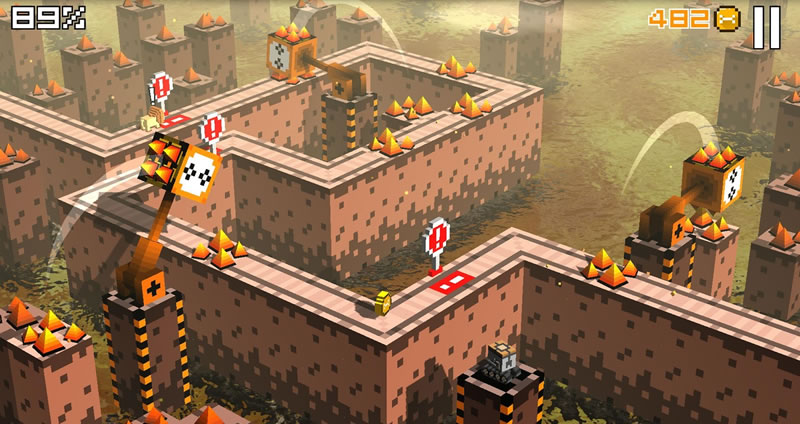
It’s Hammer time, the third stage in Cliffy.
- Social Integration. The end of each level (successful or not) pops up a screencast that you can share with friends. This is done more to lure them into playing the game too rather than having any other social value. If you connect your Google Play Services account to the game you can also access Leaderboards where you see how your score compares with those friends of yours that play the game already. Lastly it also offers you some Achievements through Google Play Services though those don’t provide any in-game value but are more for social bragging.
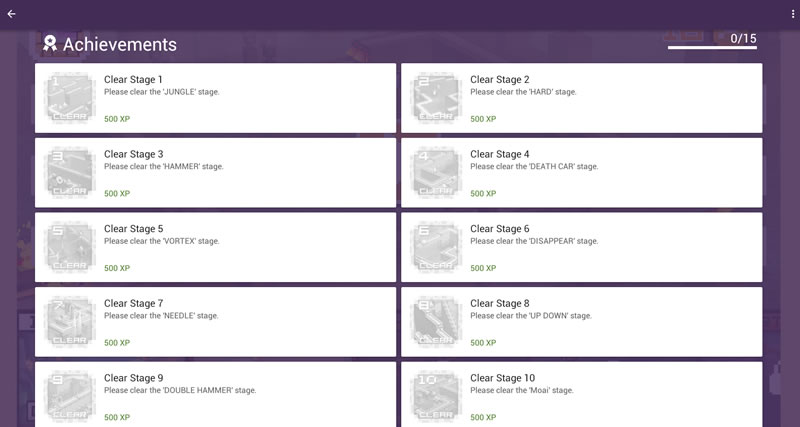
Achievements don’t serve at much.
- Coins. Last but not least in each level you collect coins. The most frustrating thing is when you’re killed at 90% in a stage and coins are useful to help you continue. If you have enough coins you can revive your character and complete the stage. While the first review is only a few coins, subsequent revives in the same stage grow exponentially in cost (i.e. next one is 10 coins, then 20, then 40, …). Luckily there are free gifts, every six hours you receive 150 coins to spend for revives or unlocking a new character (100 coins). You can also purchase coin packs for real money or do certain actions to receive them, but you can play the game without any in-app purchases just as well.
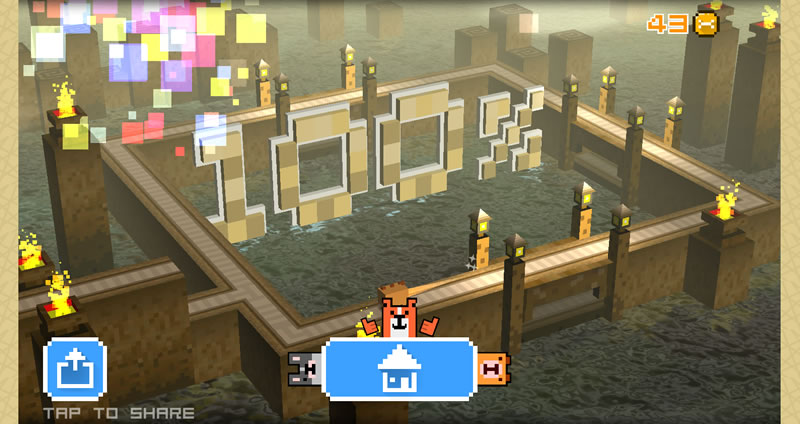
At the end of each stage you get a coins-galore run.
Conclusion
I had fun in my 3-stage test of Cliffy Jump and I admit that I would play it again, even if before installing it I read some users complaining about the resemblance between Crossy Roads and it. Get over it people, that’s a normal thing to happen, you get an idea and improve it. Just like Crossy Roads took the original Froggy gameplay and enhanced it. Or Minecraft being inspired by Dwarf Fortress or Dungeon Keeper. And dozen if not hundred other popular titles that enhance an original idea. You’re installing a game to see if you like it and have fun, so if a game does that then what’s the problem.
Summing it all up Cliffy Jump has a great design and, with the danger of sounding as a cliche, an addictive gameplay. I’m not a fan of the soundtrack but that can be easily disabled from the options, where you can also reduce the quality of the graphics if your phone or tablet doesn’t support it. Also, I feel that the game is better played on a tablet than it is on a smartphone.
[pb-app-box pname=’com.wegoone.followway’ name=’Cliffy Jump’ theme=’light’ lang=’en’]

